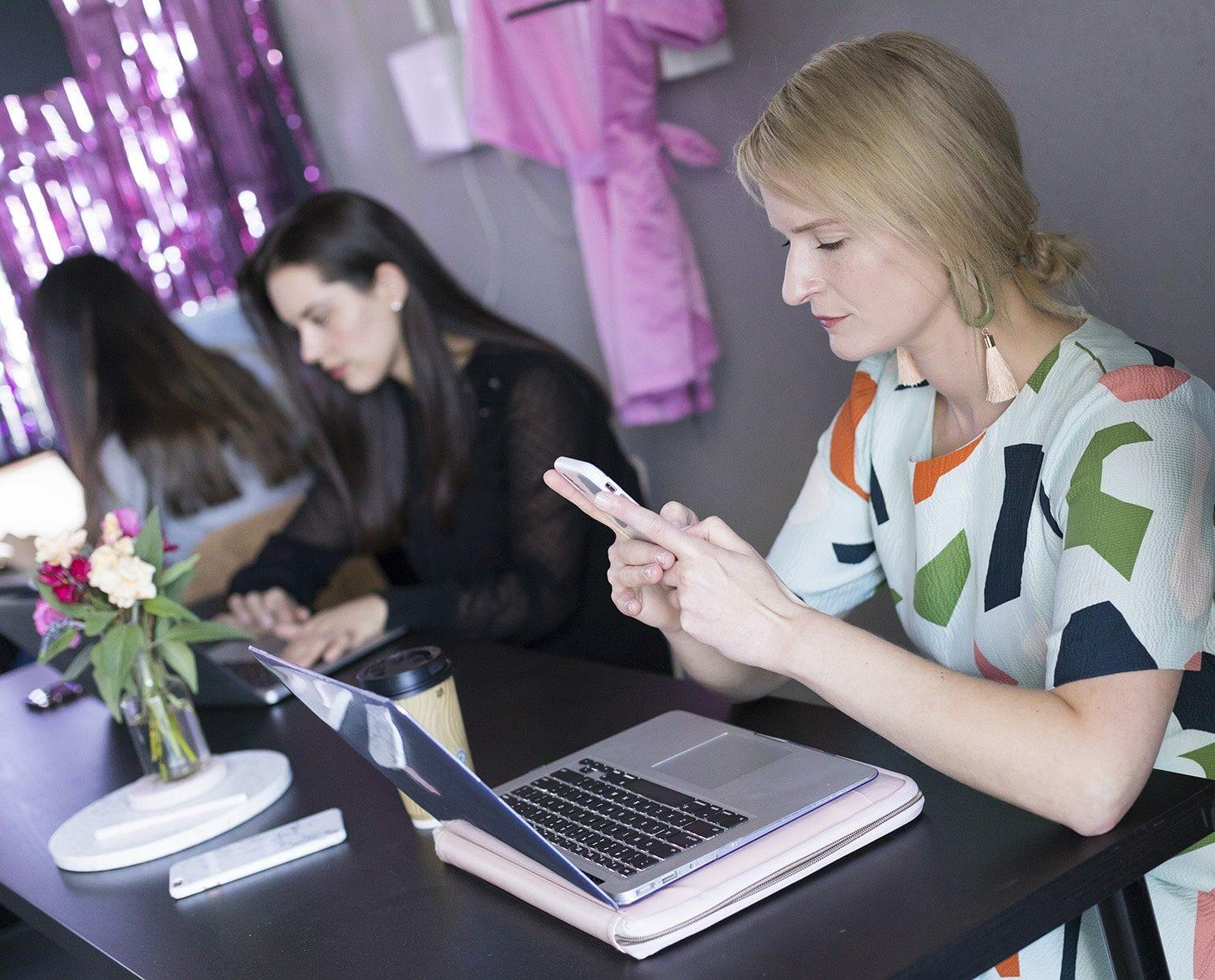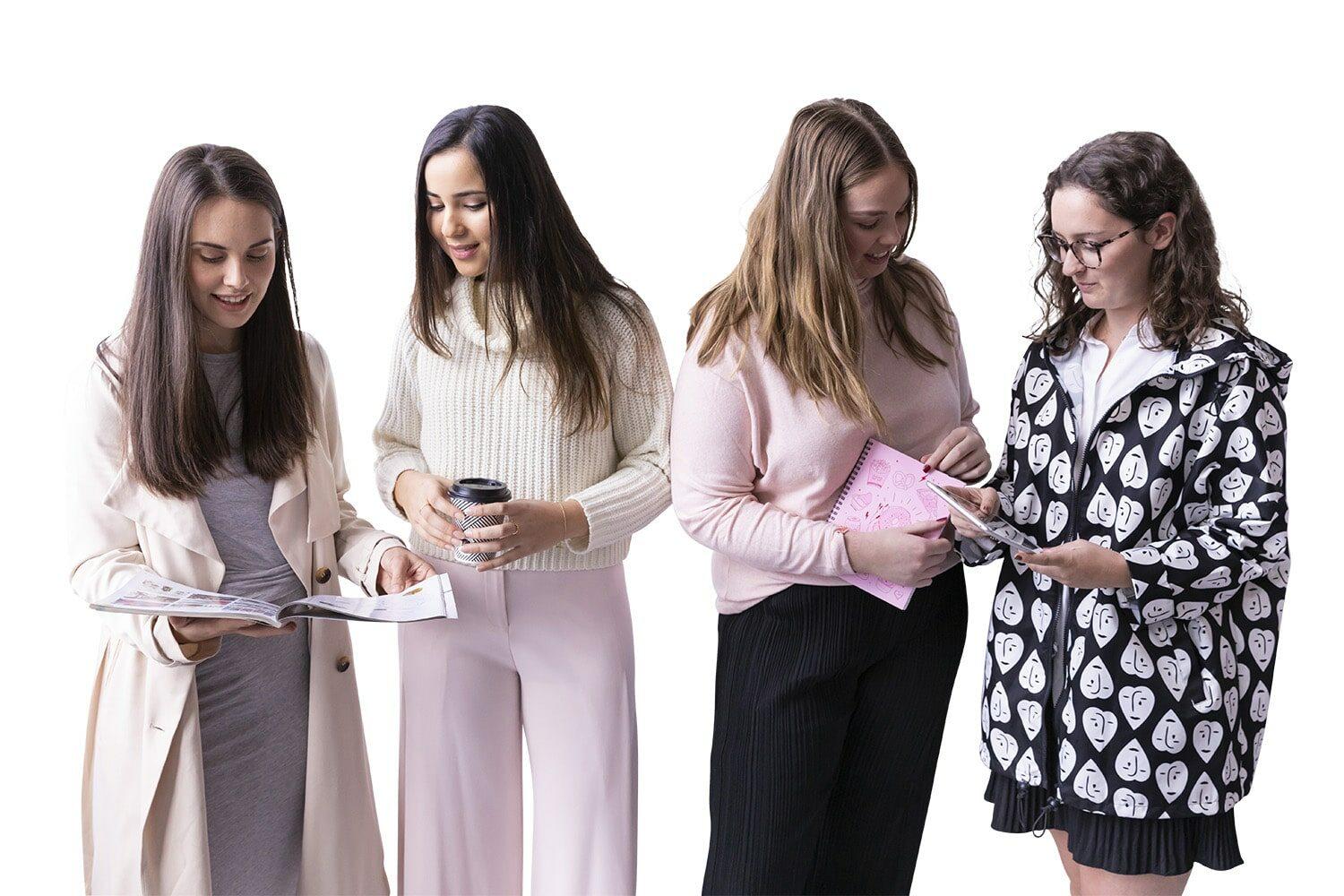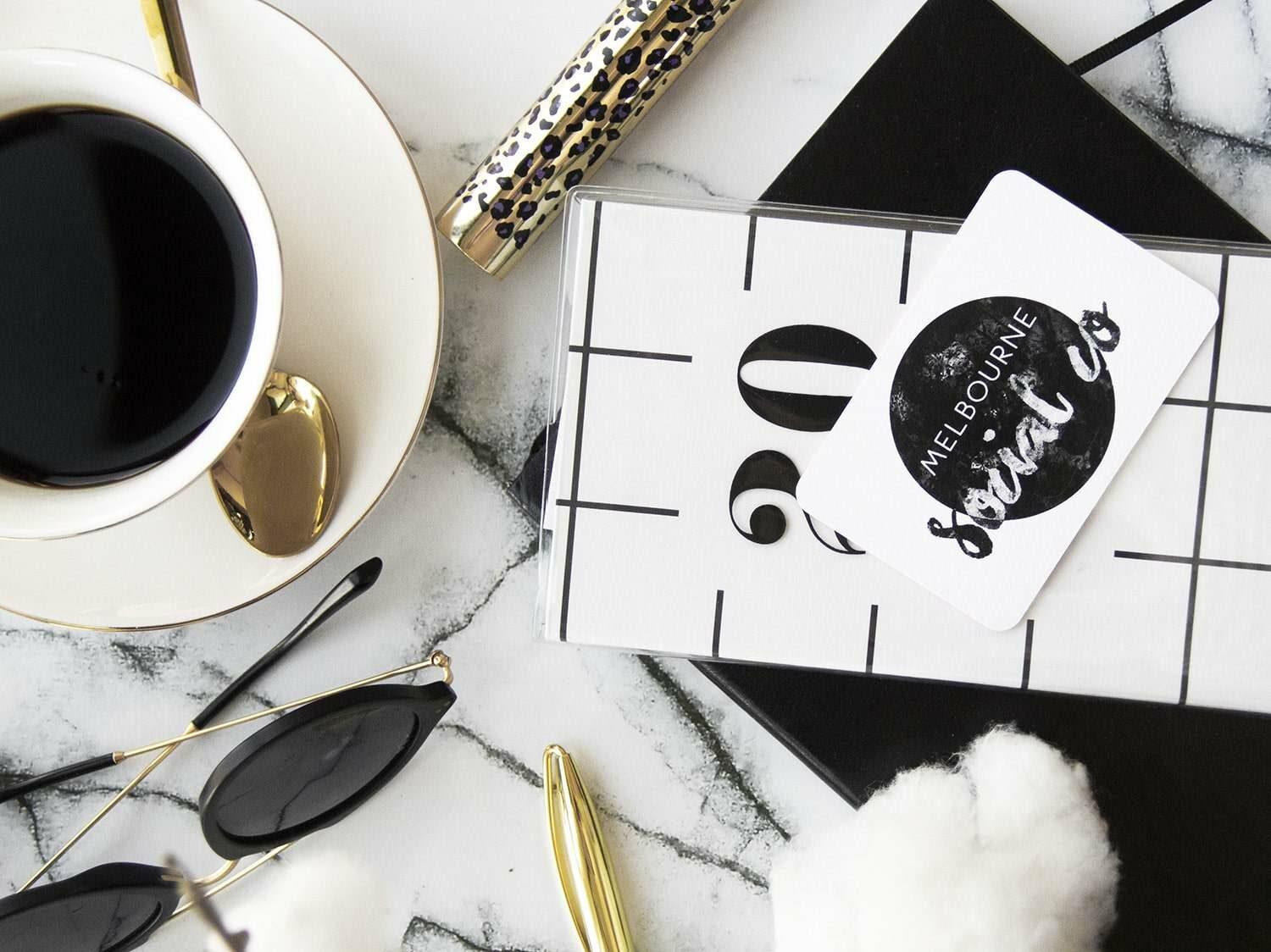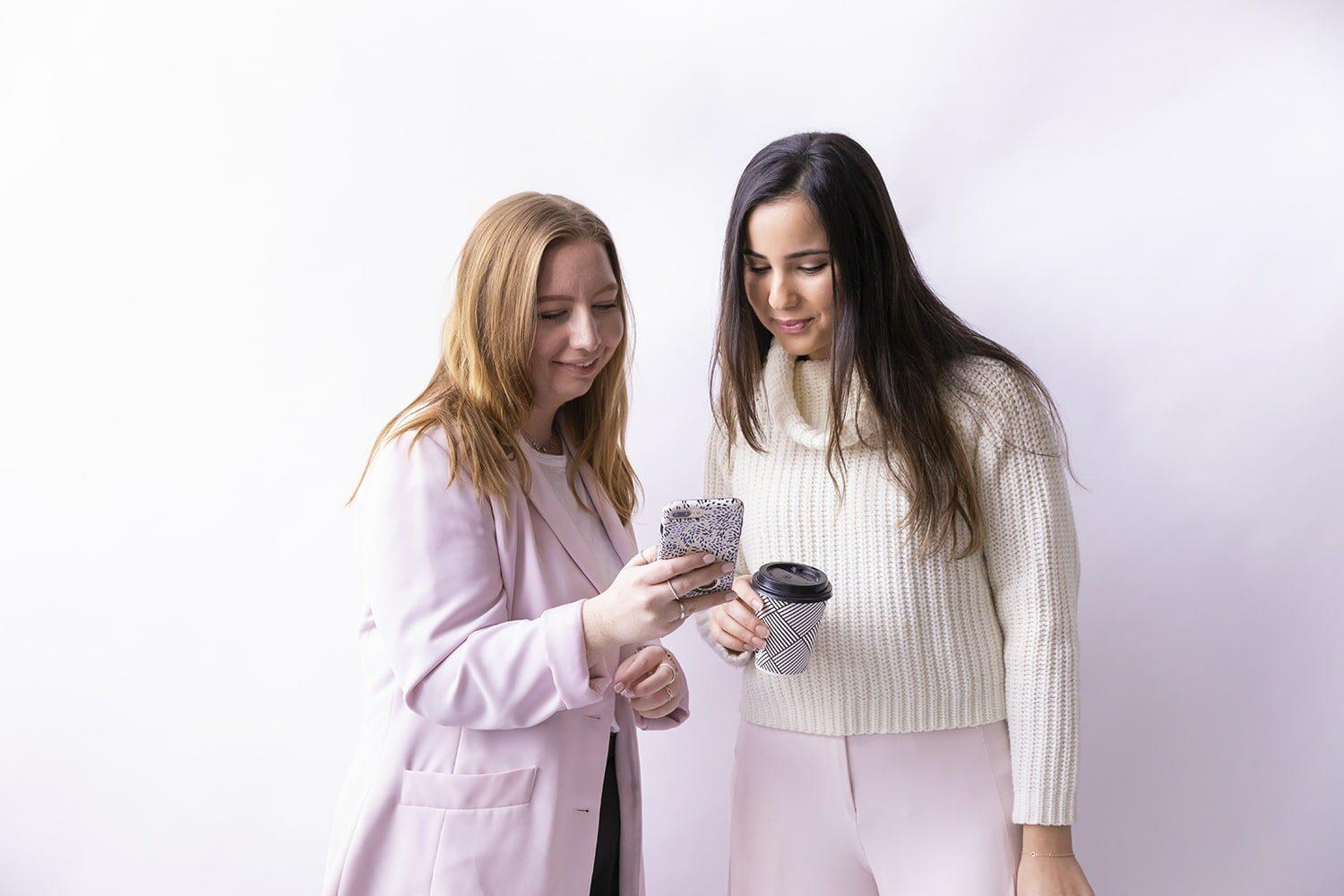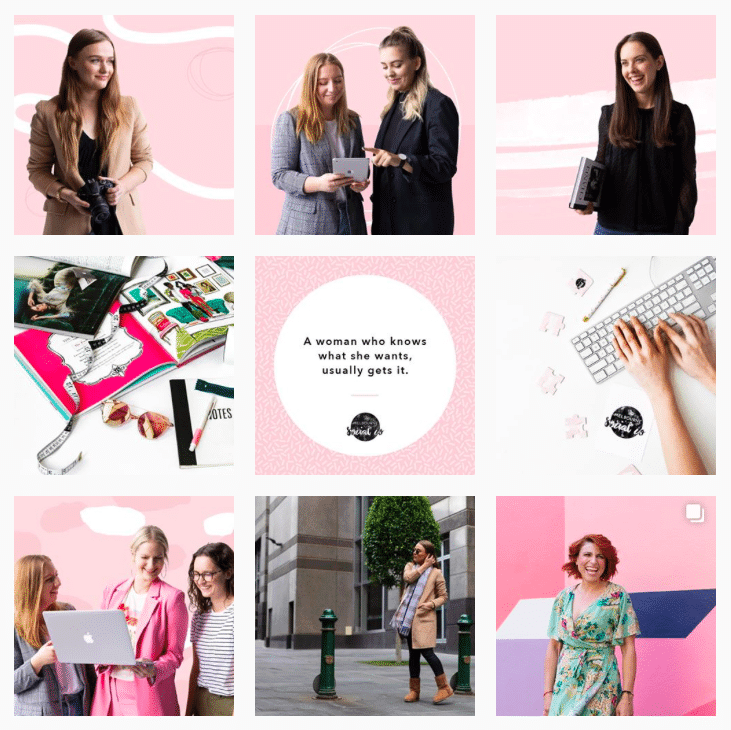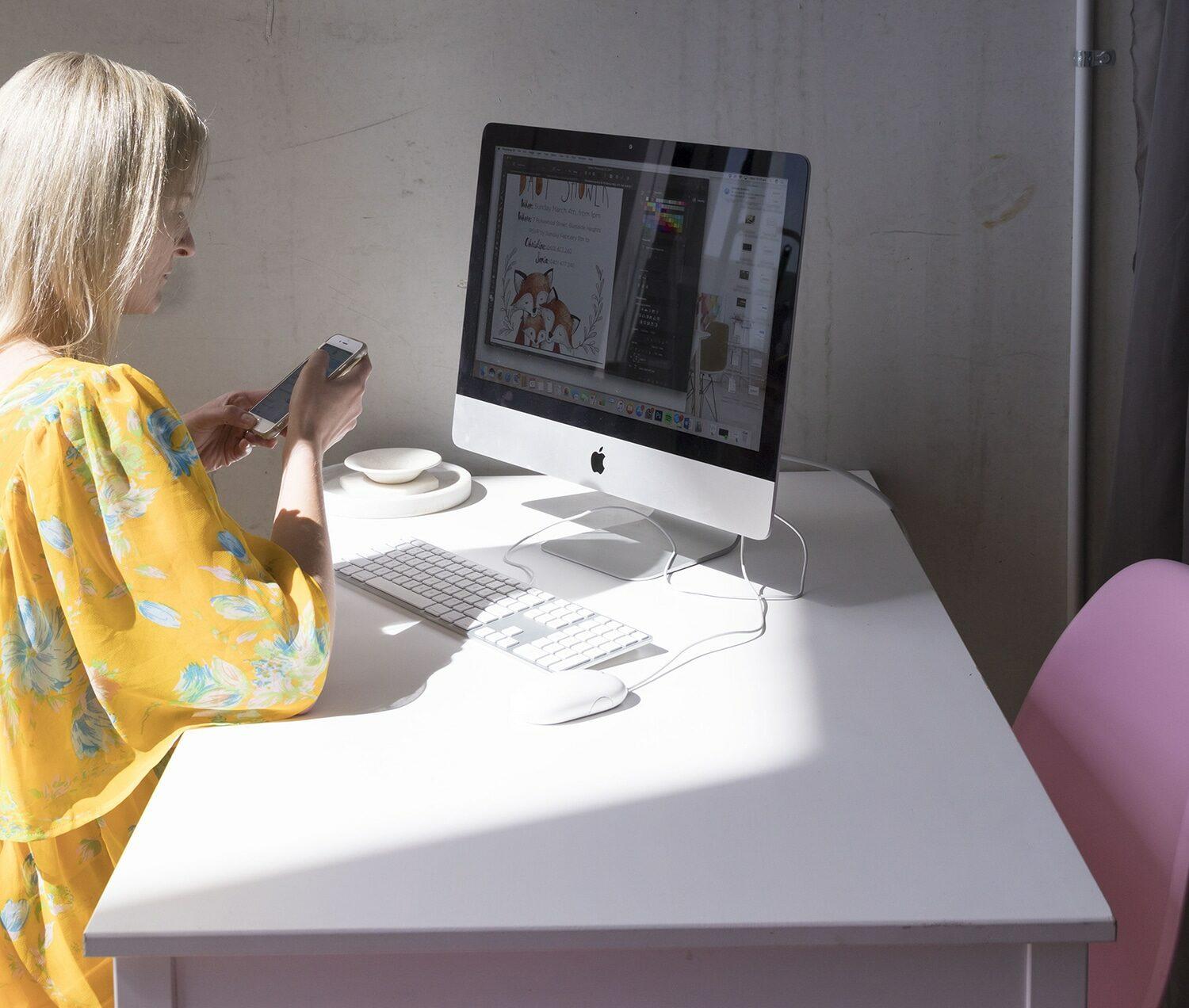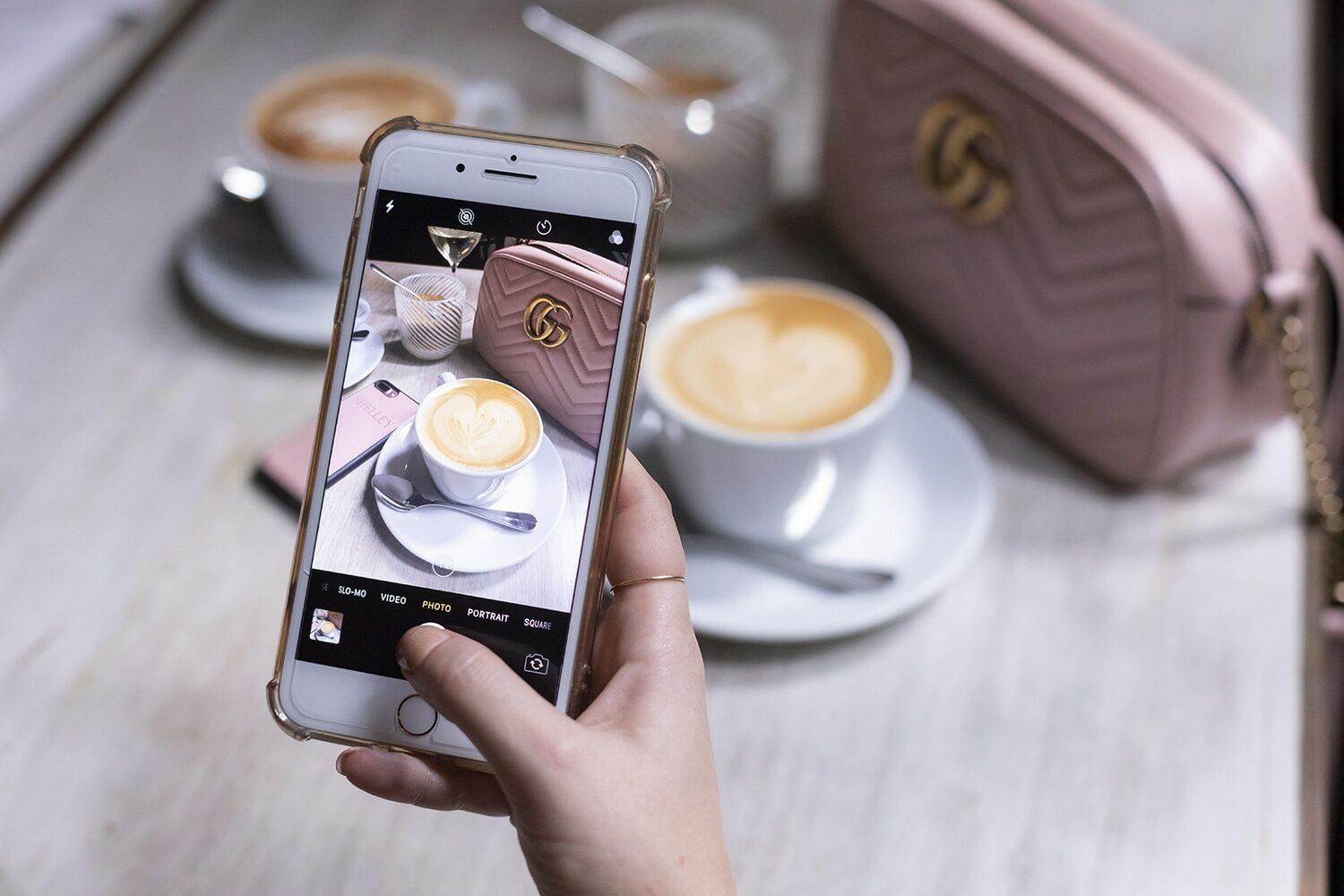The Benefits Of A Boutique Agency
Thinking of outsourcing your brand's marketing requirements? Tossing up between working with a large or boutique agency? We're sharing a few tips on why boutique is the way to go!
When it comes to sourcing an agency to best represent your brand, its no secret there is a bit of an oversaturation in the world of marketing and social media.
More than often, it’s tempting to choose a large, well-known company to meet your marketing needs - but what about the alternatives? There HAS to be another option for value, satisfaction and success.
Here lies the secret weapon that is the Boutique Creative Marketing Agency.
With an intimate team of professionals directly at hand, the benefits of choosing a boutique agency are endless.
Direct access to the owner, specialist team members and closer client relationships
Too often the hierarchy at big agencies resembles more of a monarchy than an efficient, innovative space for creativity and client relations to flourish.
In larger businesses, strict structures and reporting protocol limit the contact and input a client can have when it comes to the services provided to them.
At a boutique agency, a smaller team of handpicked professionals can offer a more personal service and creative space for successful client relationships. Your creative team are able to position themselves as an extension of your business, leading to a more authentic content creation process.
Owners and senior members of staff have the ability to directly oversee projects within a smaller team, allowing a client’s input and best interests to be at the forefront of their minds; ultimately producing higher quality work that is the best representation of your business’ vision.
Lower Cost
Instead of the cost of overheads including extra support staff, lavish workspaces and expense accounts that you would find integrated into proposed quotes by larger agencies, outsourcing a boutique agency to market your business can be a much more cost effective option.
With a boutique agency, clients pay only for the team that actually works on a job, meaning no unjustified or hidden costs. Generally a Melbourne Social Co monthly retainer is equivalent to, or less than, the cost of a full time junior salary - a fee that gives you direct access to the experience of an entire creative team.
Faster turn around
Another major benefit when it comes to choosing a boutique agency over a larger competitor is the quick turn around time for projects and content.
Boutique agencies carefully hand-pick a manageable amount of clients they believe they can deliver genuine results to, so your project wont be put on hold or lost in the crowd. This tailored approach smaller agencies employ ensures your campaign will be given the attention and dedicate it deserves, leading to better results!
These are but a few benefits we can recommend when it comes to going ahead with a smaller, boutique marketing agency. For any queries, or additional information on how we at Melbourne Social Co can provide the very best service for your business or project, contact us today - [email protected]
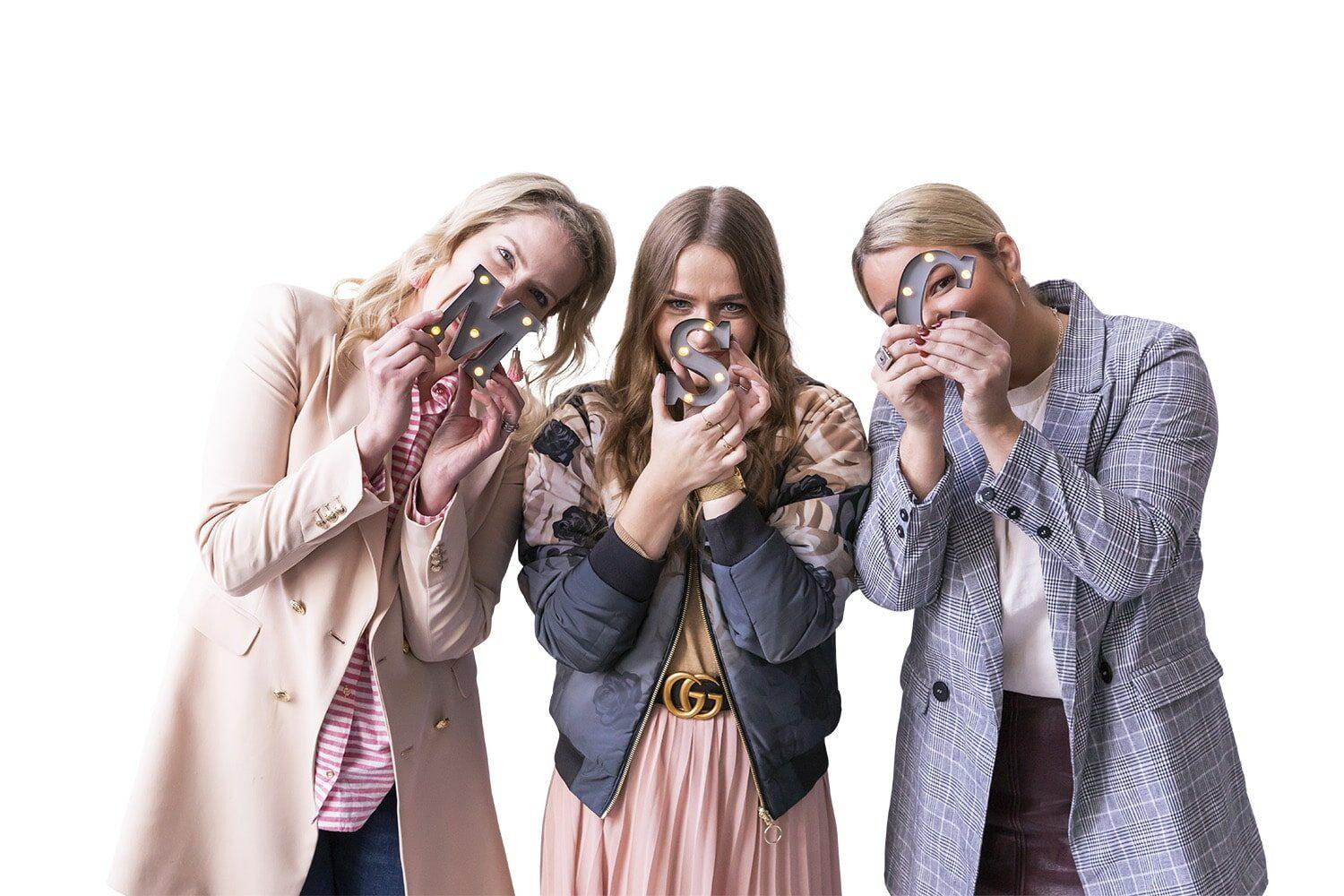
8 Reasons To Hire A Social Media Manager
Thinking about whether to manage your social media accounts in-house or to outsource to a professional?
We're sharing a few points on why it's a good idea to outsource your social media management requirements to a professional or agency.
1. Content creation
Having a professional manage your social accounts opens the door to amazing, expert content creation. Not only will your content be creative and of a professional standard, it will also be visually consistent and add to the overall aesthetic of your social pages.
2. Stay ahead of the trends
When you work with a professional, you're tapping into their years of broad experience in social media! It's your social media manager's job to stay up to date with all of the latest digital trends and they will adapt this knowledge to your business.
3. Consistent & professional tone of voice
It is very important when managing a social account, that the tone of voice of the account is consistent and professional. If a social account is managed internally and shared around amongst a team, the tone and professionalism of posts will differ. However, if the account management is outsourced, it will prevent variation in tone and keep the entire account consistent and professional.
4. Increase engagement
Managing your social media account is a daily task, but it can sometimes come second to the day-to-day tasks you have when running a business. Having a pro managing your social media means that no comment will go unanswered and social media can stay a priority without taking away time from the business. Not only will this make your business more personable and real, but it will increase your engagement rates, which will lead to your content appearing higher in your followers' feeds.
5. Reliability
Want to remove any unnecessary worry from your day? With a dedicated professional managing the account you can depend on them to post at the right times and provide a reliable account to engage with followers - this includes after hours!
6. It’s a time saver
Who doesn’t love saving time? By hiring a professional to head your social media it’s one less thing you, as a business, need to do. With your social accounts in more than capable hands, it gives you time to focus on other pressing matters.
7. Accountability
The great thing about using a professional to manage your socials is the level of accountability they bring. Clients expect a certain level of responsibility when outsourcing and a professional will record and measure the work their doing. This helps them meet the client’s needs and also holds them accountable for the work their doing.
8. It’s Fun
To put it simply, social media is fun, especially to those who have made it their career. By hiring a professional to manage your social media, you are guaranteed a committed worker who absolutely loves what they're doing.
Ready to outsource your social media requirements to a professional agency? We're here to help! Contact us at [email protected] today.
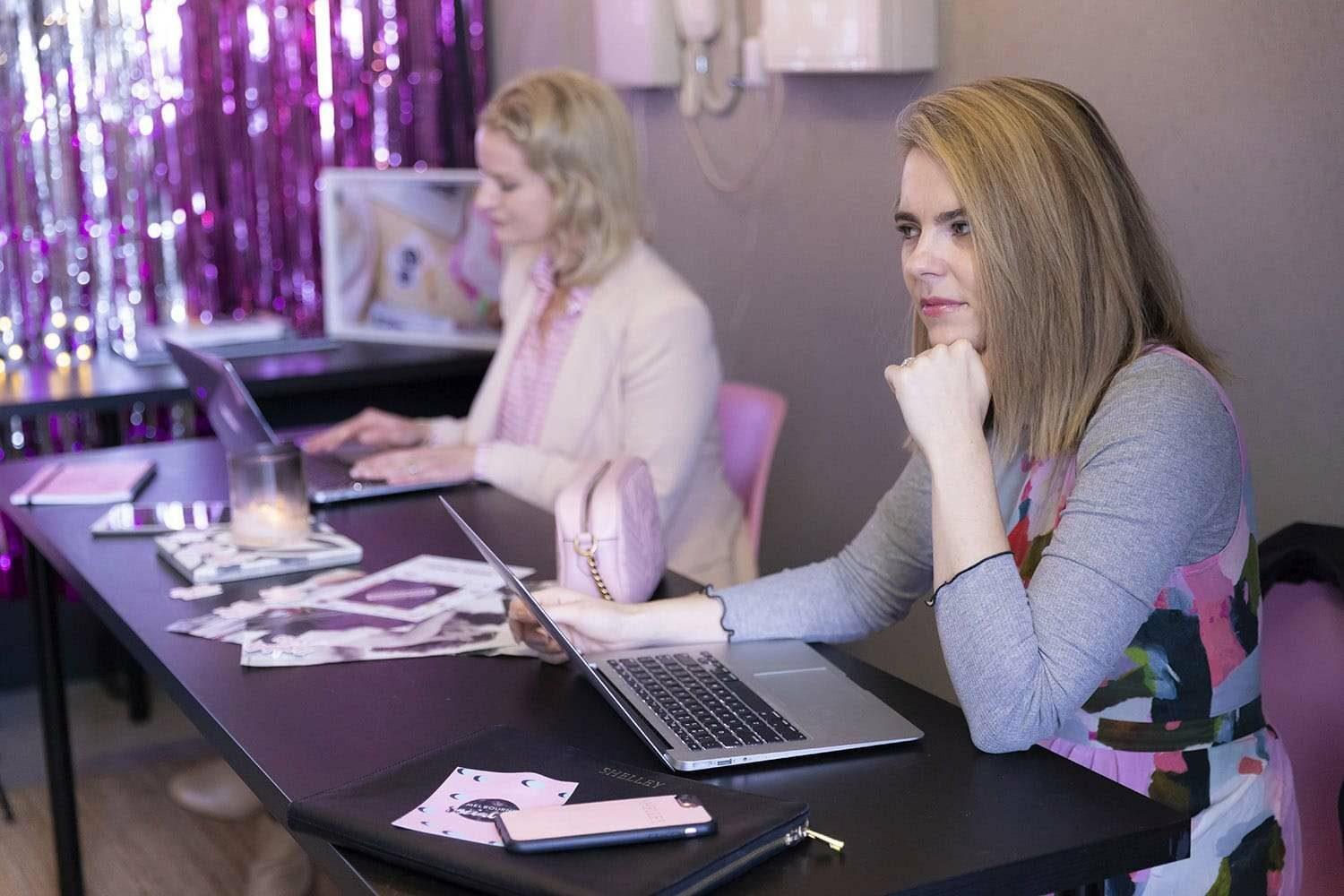
Common Social Media Marketing Terms Decoded
If you’re involved in digital marketing, chances are you’ve heard terms like ‘SEO’, ‘engagement' and ‘analytics’ thrown around, often with no explanations or convoluted descriptions. We’ve put together the complete guide of need-to-know social media marketing terms and what they mean for you and your brand. You’ll be bragging about your EDM strategies, your cost per click and conversion rates in no time with our quick guide of digital marketing definitions!
Common Social Media Marketing Terms
A/B testing
A/B split testing refers to testing multiple ads on your target market, where the social media platform (e.g. Facebook) records your best performing ads, and refines your creative as a result. To undergo split testing, you’ll need multiple creative executions of the same ad (variations in copy, different imagery, differing hashtags), and you can run as many of these variations as you like. The platform you’re advertising on records your audience responses such as reactions, comments, shares, or whether people hide or complain about the ad. Split testing is highly recommended, as it means the ads being shown to your target market are the ads which are most likely to succeed.
Analytics
Social media analytics refer to the statistics gathered from your ad sets, which tell you more about your target market and their social media habits. Your digital analytics will tell you who is engaging with your content, how they’re engaging with it (e.g. are they sharing the content? clicking through to your website? are certain times more popular than others?), and from this data you can make more informed decisions regarding your advertising. Analytics are one of the most valuable resources in forming your marketing strategy, and is a major part of the rise of social media advertising over traditional medias (such as billboards or magazine ads).
Clickbait
‘Clickbait’ headlines or tags are a marketing strategy which aims to drive an audience to a site or external link, through creating intentionally vague & dramatic, sometimes misleading headlines. Examples include: “You’ll never guess what Kim wore!” or “Oprah’s live interview: We’re SHOCKED by what she does next!”.
While clickbait headlines can be effective in encouraging people to click through to the next page, headlines like this can also drive consumer distrust or frustration.
Content creation
Content creation simply refers to the creation of images, text, videos, audio files, or any other content to be shared on social media. A lot of advertising or marketing agencies may offer content creation services, which is done by writers, photographers, videographers, editors, animators and stylists, and is posted strategically to engage an audience with a brand.
Conversion rate
The definition of your ‘conversion rate’ will vary depending on your marketing strategies. For example, if you’re running an ad set to encourage people to sign up for your newsletter, your ‘conversion rate’ will refer to how many people fill out the sign-up form. However if your ad set is designed to redirect people to your website, your ‘conversion rate’ will be a record of how many people have visited your site as a result of your ad. Your conversion rates will usually take into account how many people your ad was shown to, and is used to develop your ‘cost per click’.
Cost per click
Your ‘cost per click’ is a summary of how much your ad’s are costing you for every ‘converstion’. Ideally, you would like your cost per click as low as possible, because this means you are getting a higher ROI. Part of what A/B split testing takes into account is your ‘cost per click’, so the ads which are ultimately run are the most cost effective ads for your page.
EDM’s (Email Direct Marketing)
Email direct marketing is advertising in the form of direct emails to your client base. A common use of EDM’s is to promote an upcoming sale or special offer, inform customers of new products and releases, or simply to create a positive brand image by sending out relevant content. EDM’s usually record how many people click-through on your email, which contribute to your marketing analytics.
Engagement & Reach
‘Engagement’ and ‘Reach’ are two of the most common terms in digital marketing, and are both measures of the success of your ads. Engagement refers to how people respond to your ad, so ‘healthy’ engagement means having a high amount of reactions/comments/reposts for the amount of people who’ve seen your ad, and is usually calculated as a percentage. Reach on the other hand refers to the amount of people who’ve seen your ad. Effective advertising usually means striking the right balance between having lots of people see your ads, but also having those people respond positively to it. Social media marketers will focus on generating engagement or reach depending on your campaign; if you’re launching a new product you might focus on achieving a high ad reach, whereas if you’re encouraging people to attend a local event, your ads may focus on driving engagement.
Impressions
Your ‘impressions’ amongst your target audience are similar to your ad frequency. Impressions simply refers to how often your ads are shown to your target market, which is used to develop your engagement rates & cost per click.
Influencer
An ‘influencer’ is refers to a social media account with a significant amount of followers or likes, usually due to the quality or unique value of their content. Generally, an influencer has a minimum of 10k followers, while a ‘mega-influencer’ usually has at least 100k followers. Some brands use influencers as a highly targeted way of advertising to their particular audiences. Influencer marketing can yield a high ROI (return on investment) and has a good track record of fostering consumer trust. We’ve written another piece about digital influencers, which you can find here.
SEO (Search Engine Optimisation)
SEO (Search engine optimisation) is a popular digital marketing technique, and is usually completed by a digital marketer with specific experience or training in writing for SEO. By choosing specific words or phrases over others, and careful decisions about where these words appear on your site or page, your website may appear before others when consumers are searching for a particular product or service, via a search engine such as Google or Bing. Investing in SEO allows can increase the likelihood of consumers choosing your brand over competitors, however this service can sometimes be expensive, so make sure you review all your analytics if you take this path!
Want to pencil in some time to chat to our team about your marketing strategy in 2018? Contact us at [email protected] or visit our Consulting Sessions page to make a booking.
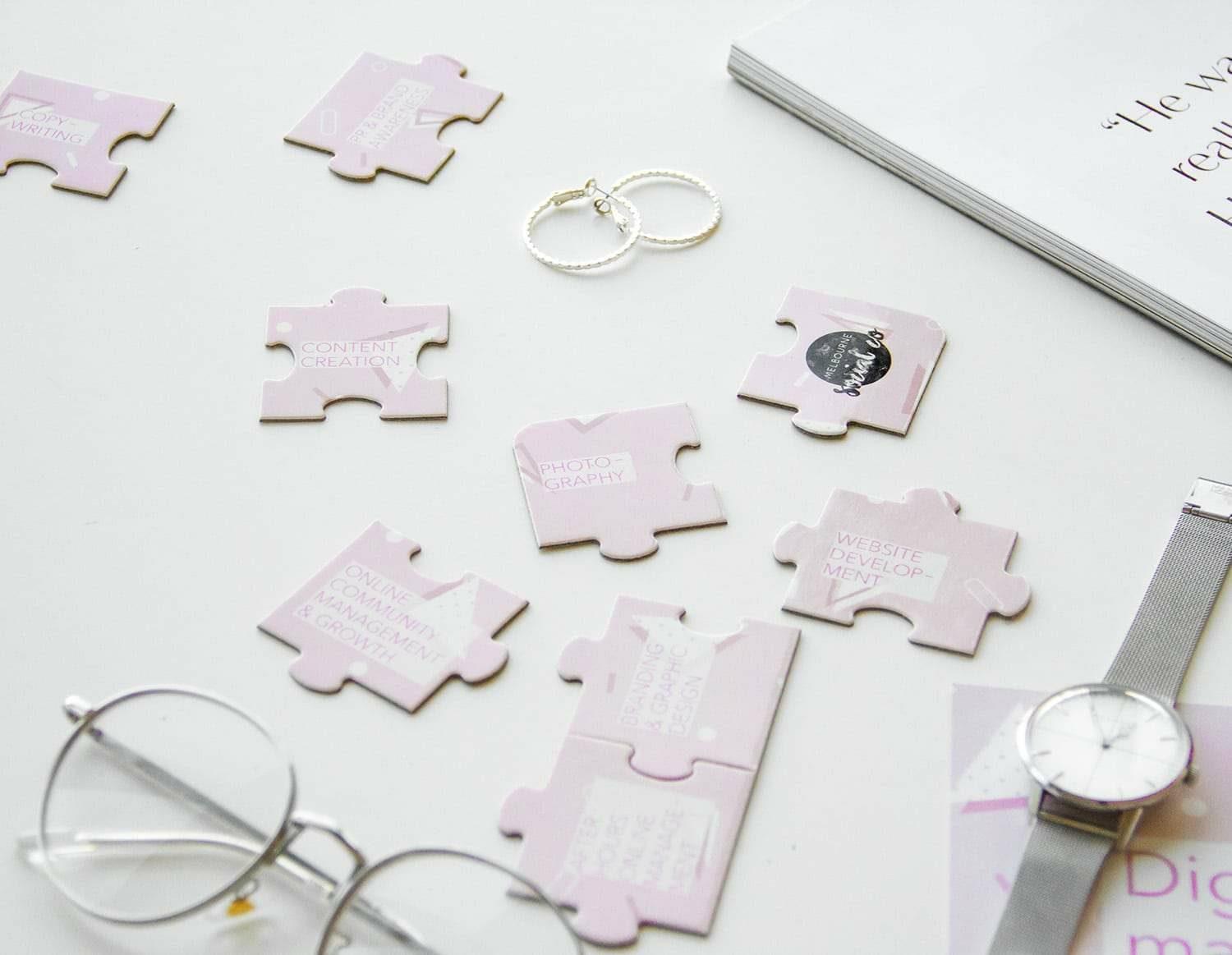
The Latest Instagram Algorithm Changes
Want to know how Instagram's latest algorithm will decide what photos and videos show up in your feed? We’ve got all the answers!
Done in an effort to refresh the app and improve chronology, Instagram is opening up about what’s new and why.
A personalised feed
The new algorithm places a focus on ensuring everyone’s feed is unique and relevant to the user. This personalisation is done through monitoring who you interact with and past behaviors. Basically, a users level of engagement with certain accounts will determine how much or how little they will see of that content.
A big part of this new and improved personalised feed is to prioritise posts from your ‘friends and family’. The updated algorithm claims that users will now see 90% of the posts from their ‘friends and family’ (as determined by Instagram), as opposed to 50%, which was the percentage prior to the algorithm change.
Breaking it down - interest, timeliness and relationship
To help us further understand the new algorithm, Instagram has broken it down into three important determining classifications: interest, timeliness and relationship.
Interest = how interested they think you’ll be in the post
If Instagram thinks you’ll be interested in a post, they will prioritise it and it will appear higher in your feed. How do they determine what they think you will like? Well, they base this on your past behavior and engagement with similar content.
Timeliness = relating to how recently a photo was posted
This new aspect of the algorithm intends to limit how often users are seeing ‘old’ posts from weeks ago and helps keep users feeds more recent and up to date.
Relationship = determining the ‘friends and family’ category
Instagram is taking more notice of users relationships with other users. For example, if you frequently comment or are tagged in a person’s photos instagram takes that to mean you have some sort of a relationship with them and they will be categorised as your ‘friends and family’.
So what can your business do to make sure your posts are being seen and heard in the Instagram feed? Why not pencil in a chat with our team to discuss your Instagram strategy.

Three Easy Ways to Increase Office Productivity
Feeling like you need to boost your productivity? You know the feeling. It’s just after 2pm and you’re left staring into the abyss that is your iMac screen, wishing reports would magically write themselves and you had a time turner to push 5pm that little bit closer.
Don’t feel guilty, we’ve all been there- boredom and distraction happens to even the most dedicated employees. Luckily for you, we’ve popped together three of our favourite tips to increase office productivity and keep you occupied and focused all shift long!
Keep Things Tidy
We know the last thing you feel like doing is giving your desk a once over with the Windex when you have piles of work to be and major writer’s block. But, trust us, this little tip could make all the difference!
Recent studies have confirmed the correlation between increased anxiety levels and a messy environment (at home or in the workspace). Clutter and untidiness can subconsciously affect mental clarity, making it all the more difficult to focus on an urgent task at hand.
We recommend keeping a small dustbin close by so you can manage your disposable mess, whilst adhering to a clear and simple organisational structure for files and documents. Even if this means spending an extra 5 -10 minutes at the end of the day tidying and putting things back into place, you and the quality of your work will be so much better for it!
Stay Nourished and Hydrated
Hitting the snooze button on a chilly winter’s morning instead of getting up 15 minutes early to grab something quick to eat is a common occurrence for many of us. Whilst you may run out the door feeling full, once you’ve properly awoken and arrived at work, hunger will soon rear its ugly head.
Hunger can drastically affect mood and concentration, so instead of you (and your work) suffering until lunchtime, be sure to leave some healthy snacks in your handbag or office drawer to snack on and keep your energy levels on track.
Eating small amounts regularly fuels our metabolism and largely contributes to our blood sugar and energy levels, equalling increased concentration and motivation.
We recommend foods high in ‘good’ fats such as almonds and avocados and berries and green vegetables rich in vitamins K & C. These kinds of Superfoods promote healthy brain function and minimise bodily stress through the benefits of antioxidants.
Stretch Your Legs
Although the thought of an afternoon stroll sounds entirely counterproductive when you have serious deadlines looming, taking a quick break can actually improve concentration. Even if it’s just five minutes around the block, up and down the stairs, or to the local coffee shop and back, moving around every few hours is very important for those with a desk job and sedentary lifestyle.
Studies have found that those who take short, regular breaks in the workspace maintain a more constant level of performance than those who don’t. Plus, moving around increases blood flow, which promotes good cardiovascular health, and all in all increases cognitive awareness and mental clarity. Plus, who would say no to an extra coffee break?!
So there you have them, our tried and tested, simple yet sure-fire ways to increase productivity, stay focused and motivated during your daily grind, courtesy of the team at Melbourne Social Co.

Want to know more about our strategy or content creation services? Send us an email today to [email protected]
Instagram Aesthetics - The Importance of a Cohesive Theme
If you’re an Instagram addict like all of us at Melbourne Social Co., you may have noticed that many of the app’s most popular accounts have more in common with each other than just a high follower count.
Successful Instagram feeds are, above all, aesthetically pleasing, but in a cohesive way that accurately reflects the aesthetics, vision and message of the person or brand.
One of the main ways to achieve such a visually consistent and impactful feed is by implementing an Instagram ‘theme’. What this means is that there is a visual common thread between all of your posts, so that when someone views your feed it will look cohesive and organised. All your posts will in some way look like they go together.
But what's the right approach for your brand? We discuss a few different ways to implement an Instagram theme below.
Pick a colour
There’s an infinite number of themes to choose from for your feed, but you’ll want to pick one that suits your content and aesthetic. For example, you could have a colour coordinated theme, where a certain colour (or colours) appear in every post. These colours should reflect your aesthetic, and perhaps the design of your brand’s product or logo. The repeating colours will help make your feed look visually stimulating and organised, as well as creating an association between you/your brand and those specific colours.
A common subject
Alternatively, your theme may govern the content of the images you post. For example, your theme could be based around a specific object that appears in every post, such as coffee, plants, water or food; whatever you like! This type of theme tends to be best suited to Instagram accounts that function to promote a specific type of product.
Post & repeat
Another popular theme that guides the content you post creates a repeating pattern of two or three different types of images. For example, this could be set out with two photos of people or scenery for every text post. The text post is usually positioned in between the two photos so that when the feed is viewed as a whole the text posts create a line down the middle. This theme allows for some diversity of content, while also maintaining an organised and symmetrical look to your feed.
A theme for your Instagram page is important for more reasons than just creating a uniform feed and guiding the content you post. Remember that the follow button is located at the top of your main feed, so people are viewing your account and most recent posts as one entity that represents your brand as a whole when they are deciding whether or not to follow you. For that reason, you want to put your best foot forward with the type of cohesive, visually pleasing and professional feed that a theme can help you achieve.
Improve your engagement
One of the other key reasons an Instagram theme is so important is because it can help improve engagement and your connection with your audience. A consistent theme will help your posts stand out to your followers in their feeds littered with hundreds of other accounts’ posts. The element of repetition in your theme will also mean your audience will know what to expect from your posts, allowing them to easily understand the messages you are trying to communicate relating to your brand.
Because Instagram is one of the most powerful platforms available to you to promote yourself and your brand, it is important that your feed reflects who you are and effectively communicates the messages you are trying to get across to your audience. A theme allows you to achieve this in the most aesthetically pleasing way possible, while still appearing professional and creating interesting content for your audience. So, if you haven’t started planning a gorgeous new theme for your feed already – what are you waiting for?!
Do you need help developing a theme for your Instagram account, or creating gorgeous content to fill your feed? Get in touch with us here at Melbourne Social Co!
Contact us today: [email protected]
Finding The Best Stock Images for Content Creation
If you’re running a social media page set up for success, we understand that you want everything you post to look amazing. We also understand the struggle achieving this if you don’t have access to a photographer or stylist, or content readily available. Here is a list of our favourite royalty-free stock image sites, as well as a summary of the Copyright Act for Australian content creators, to help you create stunning posts for your business or personal pages.
Created by yours truly, we have a collection of styled and edited photos available for purchase, which you can adapt to your brand’s needs. Take a browse through everything available here. These photos are particularly tailored for lifestyle, business, blogging, decor and design.

Pexels have a variety of photos and videos, which don’t require any attribution. They have a wide range of images, with some premium options available for purchase. There is no login required, so download is convenient and easy!
Similar to Pexels, Unsplash has a variety of artistic photos available for free download, however this site does not include stock video. The creators also don’t need to be credited, and best of all, everything on the website is free.
Unlike some of the free sites, Stocksy includes several less traditional image options, such as prints and animations, photos of families, workplace and site photos, photo collections and a range of videos. These pieces require an account and payment, and the site includes the ability to search with JPG files.
Another paid site, SC Stockshot provides stylised images which have been used by Vogue Bridal and a wide variety of wedding sites. You can also access 20 images for free by signing up to the newsletter, and the site is unique in categorising various images by colour palettes, along with traditional category groupings.
Copyright law
Understanding Australia’s copyright law can be broad and complicated, so here’s a brief summary of how it works for content creators.
Copyright law applies automatically to every piece of work, regardless of where it was made, provided it is being used in Australia. This applies to unpublished content, regardless of whether it has a copyright notice included, including work you find on the internet.
To use someone else’s work, you need to gain permission, and may need to pay for a licence. You are also legally required to credit the work’s creators, unless they have explicitly waived this right. If the work is in the public domain, or author has explicitly denied the rights of use through Creative Commons Licensing, you may use their work without permission, however it is still polite to credit them. Other exceptions for using material without permission are listed under ‘fair dealing’ in the Copyright Act, which primarily applies to educational, legal and journalist organisations.
For content creators, you may use a portion of someone else’s work without permission, provided it is not an important, integral or distinctive part of their work, and the guideline for this is 10% of the piece. The wording on this clause is very broad, so we recommend seeking permission and licenses for whatever you use to avoid infringement.
If you’d like to know more about content creation and how we can help, contact us at [email protected]
The real cost of buying likes and followers
If you’ve ever been frustrated or disappointed by a lack of followers or likes on your page, chances are you’ve considered purchasing followers on your Facebook or Instagram platforms. At first, this may seem like a simple solution: it’s a small cost and you now have a heap of followers! If users see your online popularity that’ll attract genuine customers, right?
This is the logic that platforms selling followers would promote. The reality is, purchasing likes and followers is not only wasted money, but is detrimental to your analytics, and can create distrust amongst your target audience.
One of the reasons social media is such a powerful platform for advertisers is not only the opportunity to reach consumers, but the analytics it provides. If you run your own Facebook or Instagram business page, the reports you can access on who’s engaging with your page are vital for planning any campaign.
In the age of widespread digital advertising, the way to engage with potential customers is tailoring ads to their interests and social media habits. If your reports and analytics are cluttered with disingenuous likes and follows, not only will you be missing out on the analytics of your potential customers, but your advertising dollars will be wasted on wide reach ads (which thanks to the algorithm changes, are less likely for anyone to see).
Another major disadvantage of buying followers is that it can damage consumer trust. If you’re advertising via social media, chances are your target audience includes some tech savvy, regular users, who know what organic brand engagement looks like. If your page has a heap of followers which doesn’t equate to likes and comments, consumers will suspect your followers aren’t genuine, and may deter the users that could have turned into customers.
Ultimately, the main reason your brand is advertising is to attract genuine customers. Having likes and followers is a great measure of how your audience is responding to your content, but the only value behind these likes is to tailor engaging content, which will attract users to your brand. The money spent on buying followers could be spent better on literally anything else: buying props for your flatlays, boosting a Facebook post, even an extra coffee will be better for your brand than followers that have to be bought.
If you’d like to know more about creating great content and reaching your audience, contact us at [email protected]
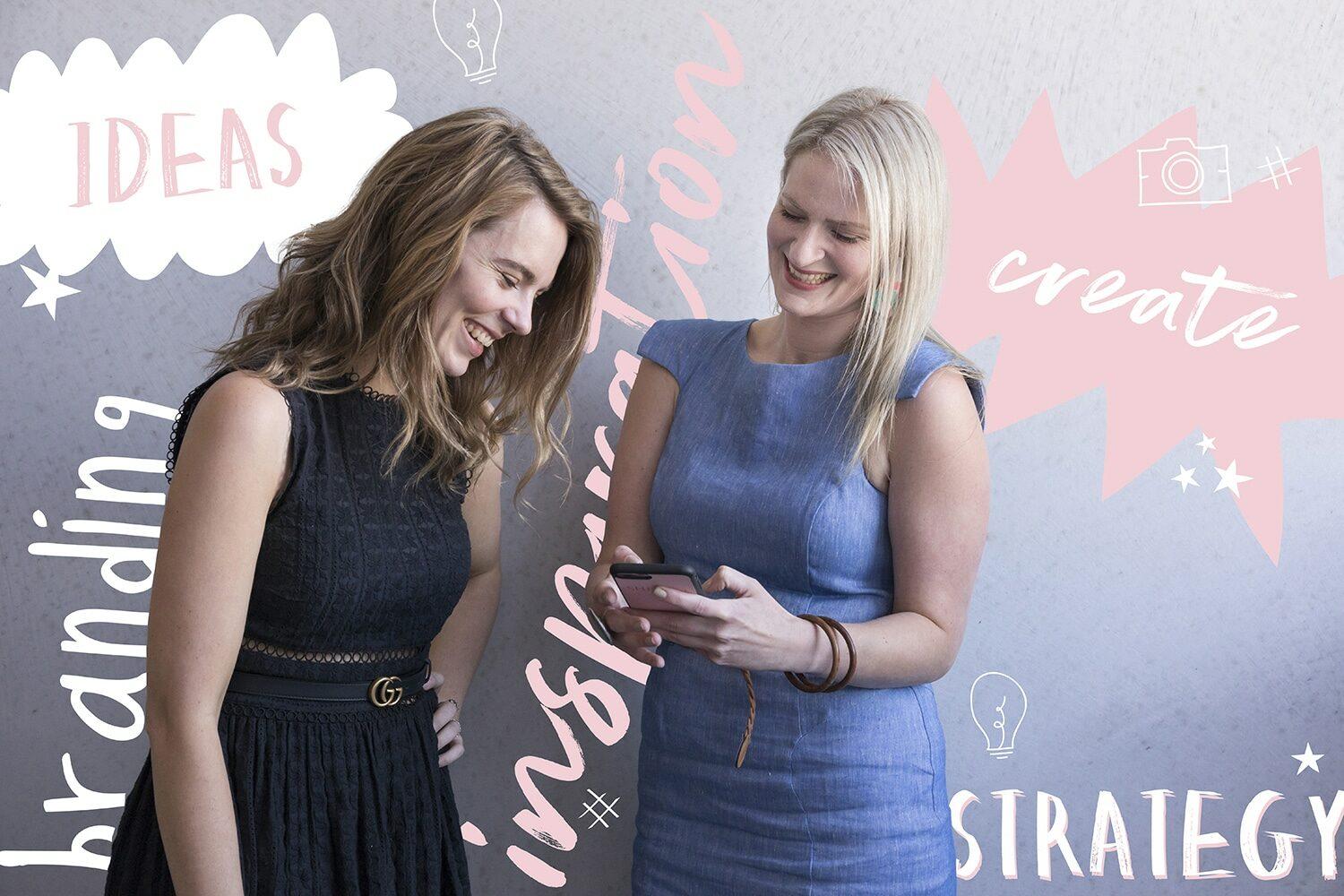
How to choose a digital influencer to work with
There are so many reasons why using influencers is a great marketing tool for your brand, including creating brand awareness, fostering consumer trust, and an excellent ROI (return on investment) compared to other media investments. With influencer marketing, you’re effectively investing in quality content, media costs and celebrity endorsement in the one go, and if you choose the right influencers to work with, you can see some great results.
Here are our top tips for choosing influencers for your brand:
Followers, Engagement & Budgeting
The size of your brand and your budget will determine whether you partner with micro or macro influencers. A micro influencer has between 1000-10,000 followers, and generally yields an 8% engagement rate. While your content is reaching a smaller audience, this audience is generally highly targeted. Micro-influencers are generally cheaper, and some may even promote your brand for free in exchange for samples, however this is not the norm. Macro influencers have 10,000-100,000 followers, with an average engagement rate of 4%. These influencers will reach a larger audience, which may not be as targeted as your micro influencers, however can perform excellently if you choose an influencer who matches your brand target audience.
Budgeting for influencer campaigns can be tricky, as each influencer sets their own rates, which aren’t necessarily consistent across the market. As a general guide, between $25-75 per thousand followers is standard.
The Warning Signs
The biggest concern with consumer marketing is that the money you invest won’t turn into brand conversions or customers, and the biggest risk of this is if the ‘influencer’ has bought their likes or followers. To avoid making a poor investment:
- Take a look at their likes and comments, and compare these to the average engagement rates for their followers. If they’re only getting 100-200 likes with 50,000 followers, it’s almost guaranteed their followers aren’t organic.
- Take a look at their content. Is this an account you’d follow? Is their content original? If an influencer’s content doesn’t meet this criteria, it’s worth wondering whether you want to pay them to represent your brand. If you’re not interested in what their posting, chances are your audience won’t be either.
- What brands have they partnered with in the past? The value of consumer marketing can be lost if they’re promoting your brand directly alongside your competitors. One of the advantages of using micro-influencers is the reduced risk of existing sponsorships.
If you’re interested in influencer marketing or would like to plan your digital campaign, contact us at [email protected]

Instagram algorithm changes – a return to form?
In March, Instagram launched a fresh series of algorithm changes that aim to organise user feeds more chronologically. This change addresses criticism by users that feeds are regularly clogged up by old photos viewed hours ago, with new posts seemingly lost.
The shift will be a welcome change to users, who can now feel more confident that their posts will be seen by their followers in a timely fashion. However, these ‘changes’ aren’t really a huge shift, if anything they’re a return to form for the platform, who until 2016 arranged user feeds entirely chronologically.
If we had to organise social media platforms in terms of their user feeds, you could quite neatly divide most platforms into two camps. In one camp are platforms such as Facebook, who rely very heavily on algorithms to predict and arrange a user’s feed according to their activity and habits. In the other camp, real time platforms such as Twitter, who arrange their user feeds predominately chronologically and encourage news-based interaction and live tweeting.
Increasingly, Instagram isn’t very easily distinguishable into either camp. While the platform was founded on the principle of showing you and your friends’ personal snaps as they happen, the major shift in 2016 to an algorithm based feed mirrors its parent company Facebook. This latest ‘change’, best described as a ‘revision’ will hopefully strike an equilibrium by controlling what a user sees while keeping feeds fresh and timely.
The main takeaway from this latest round of changes? Expect to see more up to the minute posts, less photos from 2 days ago but a feed that is still arranged around your user habits. This minor tweaking of the Instagram feed is a timely reminder for businesses to evaluate their own social media strategies, and to explore the growing list of features Instagram now offer. At the top of the list is Instagram stories. Stories are a great way to reach users up to the minute, encouraging a series of posts throughout the day and lessening the dependence on the traditional feed to reach users.
Would you like to review your social media strategy or content plan? Get in touch today.
